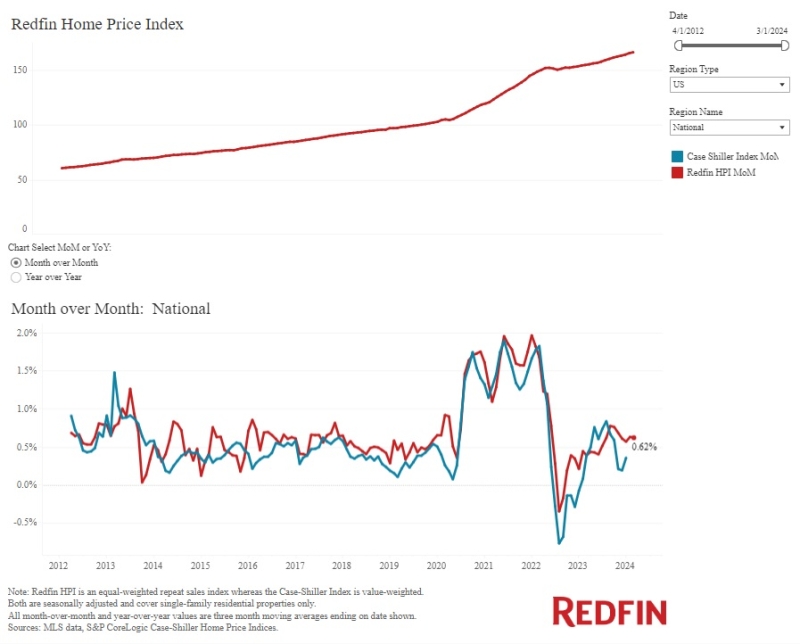Advertisement
Should the fox be guarding the henhouse?
What sub-prime underwriters look for in appraisalsKen Ormanalt-A lending, appraisals, underwriters, fair market value
Welcome to "The sub-prime forum," a column designed to help
improve your knowledge of alt-A lending and offer tips to increase
your share of this lucrative market. Ken Orman is president and
co-founder of Plano, Texas-based Kellner Mortgage Investments. As a
mortgage professional, Mr. Orman has more than 14 years of
experience working in the mortgage lending industry.
For obvious reasons, sub-prime lenders require a licensed real
estate appraiser to assess fair market value. Sub-prime lenders
have trusted residential real estate appraisers for decades to
describe, measure, illustrate and document the details about the
property the borrower is pledging as collateral. That's a lot of
responsibility for one person to have, and amazingly, the vast
majority of appraisals are accurate and reasonable.
As in most cases, the only view a lender has of a subject
property is through the eyes of the appraiser. Wholesale and
correspondent lenders are two or three steps removed from the
original order. Assuming that the loan officer ordered the
appraisal from a trusted and knowledgeable real estate appraiser,
an accurate and detailed appraisal can make all the difference in
an underwriter's approval.
This article will attempt to detail some crucial elements of an
appraisal and rank their importance during the approval process.
After speaking with several underwriters at three of the largest
securitizers of sub-prime mortgages in the nation, I found these
common themes. The following assumes the appraisal is not
fraudulent, the property is not flipped and the appraiser is not on
the lender's ineligible list.
•Fair market value and appraisal date
•Photographs
•Comparable sales (comps)
•Marketability
•Zoning
•Automated Valuation Models (AVMs)
Fair market value and appraisal date
It is rare that an underwriter will review an appraisal's fair
market value and say, "I think that the subject property is worth
more than that." Shockingly, one underwriting department claims
that appraisals have inflated values of 110 percent. This rule may
seem alarming to those who have faith in the appraiser's opinion.
Certainly, not all appraised values are inflated, but it is
difficult for underwriters who have seen so many pushed appraisals
over the years not to be skeptical of the values provided by
appraisers. Additionally, the date of the appraisal is also of
interest. All of the underwriters I spoke with said that they are
likely to highly scrutinize not just the appraisal, but also the
entire submission, if the appraisal is more than 60 days old. They
assume that the file has been shopped to several lenders already
and there must be something wrong with it.
Photographs
Pictures are worth a thousand words. Pictures help illustrate the
condition of the property, curb appeal, visible likeness to the
comps and the view of the subject's immediate surroundings. Many
appraisers do a great job of using addendums to describe additional
features of the subject property but neglect to photograph them.
Underwriters prefer picture book appraisals as opposed to novels.
In fact, in some cases, the very first items of an entire loan
submission that an underwriter will review are the photos of the
appraisal.
Comps
Of course, the subject's comps are vitally important to the final
report. Comps are the means by which the appraiser justifies his
findings of fair market value, marketability and price per foot.
Most properties that are located in urban and suburban
neighborhoods are rife with comps. In these neighborhoods,
properties sell frequently and sales prices are updated regularly.
However, there are instances of extreme stability. In these cases,
appraisers must broaden their search for comps and look outside of
the subject's neighborhood to find properties that sold within the
most recent six months. Most underwriting guidelines require
appraisals to use comps that are located within the subject's
neighborhood boundaries described by the appraiser. Underwriters
will condition the appraiser to address the reasons he had to use
comps outside those limits. All the underwriters said that they
would like to see appraisals that use comps that have the same
square footage, room count, view and lot size as the subject, have
a basement, pool or outbuildings to match the subject and be within
the subject's neighborhood boundaries or one mile, whichever is
less. However, as often is the case, these types of properties may
not be available to use as comps, and the appraiser must search for
properties that best resemble the subject outside the
neighborhood.
For example, a subject property located in a rural area of Texas
was compared to properties that were within the limits of a
4,000-person town. All of the comps were clustered four to five
miles east and were 10-15 years newer than the subject. Even though
the square footages and room counts were similar to that of the
subject, the underwriter requested additional comps because the
comps were far superior to the subject.
There were several reasons the comps were not considered
comparable to the subject, but the most obvious was location. The
subject's appeal was rural, and the comps were considered suburban.
Moreover, the appraiser had to make several adjustments to the
comps to arrive at the subject's fair market value. As a
resolution, the appraiser provided two additional comps that had
rural influence by broadening his search to 10 miles and using
sales that were 13 and 16 months old.
Marketability
Underwriters want to know that the subject is marketable within
three to six months. Lenders need to know that their collateral
will sell quickly in the event of a foreclosure. In many cases, the
collateral is the major reason for approving a sub-prime loan. Most
institutional lenders do not consider themselves equity lenders,
but for many borrowers who have fallen upon excessively hard times,
having ample equity is their only way to appeal to lenders who
might otherwise decline their applications. In such an instance,
the borrower is helped by an appraisal that accurately depicts the
subject property's neighborhood as healthy, where properties are
frequently sold within three to six months of listing.
Zoning
Appraisers must take a few extra steps when assessing subject
properties that are not zoned for residential development. Some
cities (Houston, for example) do not employ zoning requirements. In
these instances, the comps will also not have zoning limits. For
properties that are zoned agriculturally, appraisers must provide
comps that have the same or comparable zoning. Many lenders require
evidence that the subject property is not being used as an
income-producing farm, sits on several acres and is zoned for
agricultural use. Subjects that are zoned as mixed-use or
commercial properties must have the following:
•A rebuild letter from the city stating that the subject
can be rebuilt as a residential dwelling;
•Similar comps (if the subject is mixed-use, all of the comps
must be mixed-use in an enterprise that is similar to that of the
subject);
•Confirmation that the subjects highest and best use is that
of a residential or mixed-use dwelling.
AVMs
AVMs are becoming more sophisticated and accurate. Counties across
the United States are updating sale and transfer data much quicker
and more readily. AVM fees have come down substantially in the last
couple of years. I am now recommending that my customers find an
AVM that is accurate in their area and use it as a way to help
their lenders substantiate the subject property's value.
For years, conforming lenders have been using AVMs as a way to
completely waive the appraisal. Since there is still a lot of
subjectivity to sub-prime lending, the appraisal is critical to the
underwriter's lending decision. This brief article does not scratch
the surface of all of the different details to consider while
reviewing appraisals. There are particulars, such as multiple
listing service listings, sale prices, maps, land-to-value ratios
and built-up percentages, to analyze.
In conclusion, the future is clear. Appraisals, like everything
else in this business, will at some point be automated. Until then,
the appraiser is the most important third-party vendor to sub-prime
underwriters, and the appraisal remains a critical analytical tool
for lenders. Fully understanding appraisals will be a great benefit
to loan officers who want to better serve their customers and
lenders.
Ken Orman is president of Kellner Mortgage Investments, a
nationwide wholesale sub-prime lender based in Plano, Texas. He can
be reached at (866) 416-9995, ext. 105 or e-mail [email protected].
About the author





